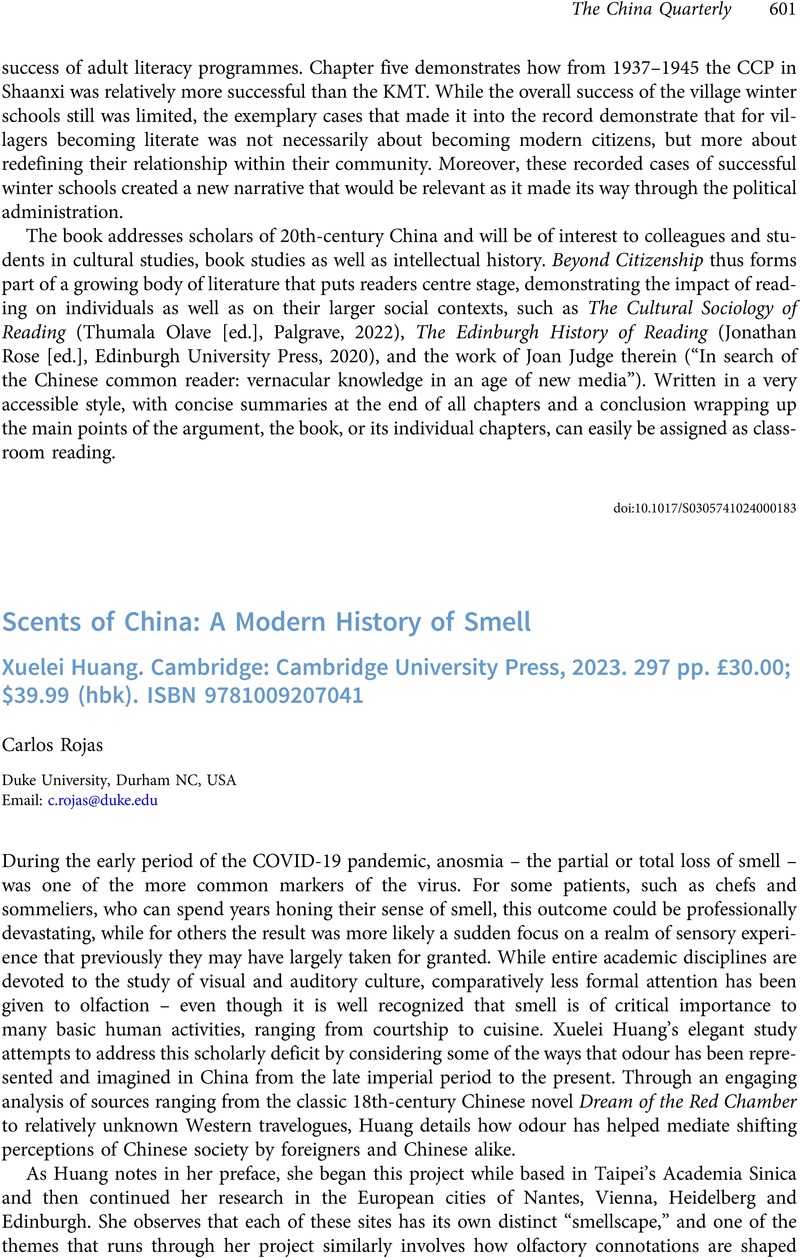No CrossRef data available.
Article contents
Scents of China: A Modern History of Smell Xuelei Huang. Cambridge: Cambridge University Press, 2023. 297 pp. £30.00; $39.99 (hbk). ISBN 9781009207041
Review products
Scents of China: A Modern History of Smell Xuelei Huang. Cambridge: Cambridge University Press, 2023. 297 pp. £30.00; $39.99 (hbk). ISBN 9781009207041
Published online by Cambridge University Press: 20 May 2024
Abstract
An abstract is not available for this content so a preview has been provided. Please use the Get access link above for information on how to access this content.

- Type
- Book Review
- Information
- Copyright
- Copyright © The Author(s), 2024. Published by Cambridge University Press on behalf of SOAS University of London





